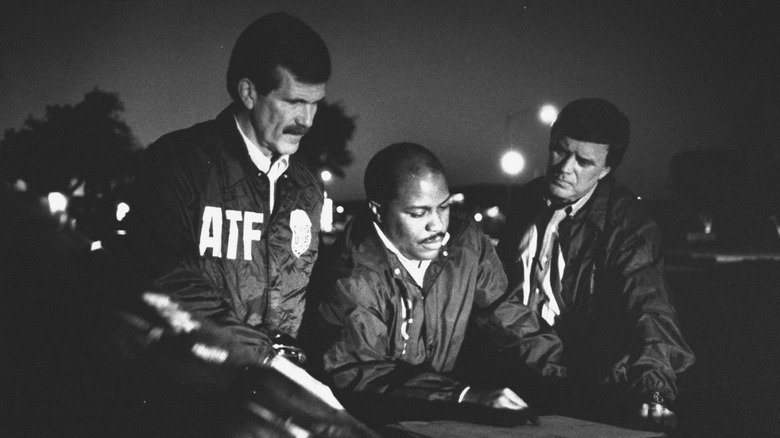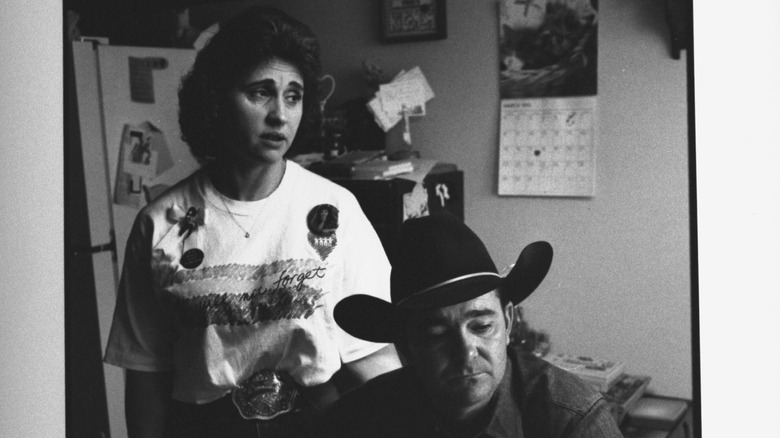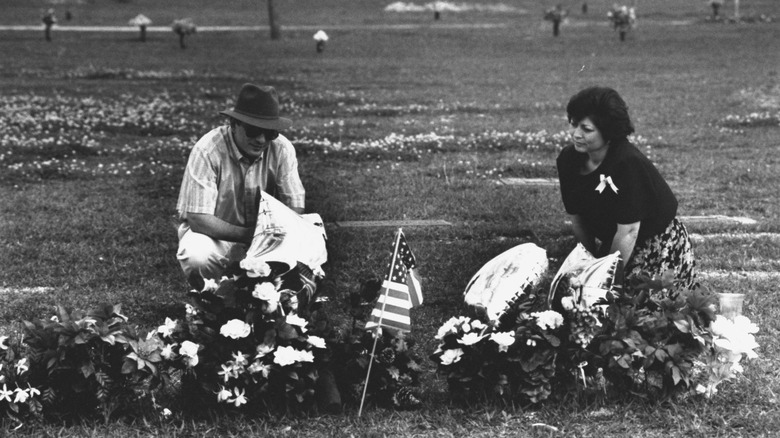The Tragic 1991 Yogurt Shop Murders And What The Autopsy Reports Revealed
The following article includes descriptions of violence against children.
The firefighters working to put out the blaze at the yogurt shop in Austin, Texas that early morning had no idea what they would discover when they finally made it inside. Austin Firefighter Lt. Hilton Crocker was the first into the I Can't Believe It's Yogurt! on December 7, 1991. What he found haunted him from that moment on. "When you go into a fire expecting to put a flame out and discover something much worse than that, it's hard to deal with," Crocker told KVUE in a November 1992 interview.
What he found was a horrific crime scene. Someone had murdered four girls, ages 13 to 17, and intentionally set the fire to cover up their horrific deeds, according to the Austin-American Statesman. The perpetrators had stripped the girls nude, gagged and restrained them with their own clothing, and shot them in the head. While over the years investigators have had several suspects — including two men who went to prison before having their convictions overturned — the case remains officially unsolved more than 30 years later, per CBS News.
The crime
Officials sealed the autopsy reports in the wake of the murders "to preserve confidentiality of evidence," according to the Associated Press, but bits of the findings are shared at CaseText. As the case progressed, the horrific details of what Amy Ayers, 13, her best friend 15-year-old Sarah Harbison, Sarah's older sister, Jennifer, 17, and her coworker Eliza Thomas, also 17, suffered through came to light. That night, Ayers and Sarah Harbison walked over from a nearby mall to meet up with Jennifer, who was closing the shop with Eliza. A few hours later all four were dead. Ayers, who firefighters found in the back of the shop in the prep area, had two gunshot wounds to the head made with two different caliber pistols — a .22 and a .380 — with the second being the fatal shot, according to court documents in the case (via FindLaw). She also had ligature marks around her neck from being strangled, but not fatally so.
They found the other three girls in the store room. Their nude bodies had been stacked up and were badly burned. They too had been tied up and all three died from single gunshot wounds to the back of the head made with a .22-caliber gun. The slugs were badly damaged making it impossible for the investigators to tell if they all came from the same weapon. They found a ligature around Jennifer Harbison's neck and the killer or killers had also sexually assaulted Sarah Haberson. Police never recovered the murder weapons.
The suspects
The Austin police, state, and federal authorities quickly organized a task force to investigate the yogurt shop murders. By January 1992, they'd looked at and rejected several suspects, including a young woman and her boyfriend who falsely confessed, and area drug dealers with "airtight" alibis, per the AP. Then in October, Mexican authorities arrested two men whom Austin police were looking for. One of the men confessed to the yogurt shop murders but later recanted, saying Mexican federal agents had tortured him. The trail went cold by the end of 1993.
In October 1999, Austin police arrested four men — Michael Scott, Robert Springsteen, Maurice Pierce, and Forrest Welborn — after Scott and Springsteen confessed to the murders (which they later recanted), per court records in the case. Police originally interviewed the suspects, all teens at the time, in December 1991. They denied any involvement in the crime and investigators never followed up. Juries tried and convicted Springsteen and Scott in 2001 and 2002, respectively, according to People. Authorities released Pierce and Welborn for a lack of evidence. Both Scott and Springsteen were serving life sentences when the Texas Court of Appeals overturned their convictions because they were not allowed to cross-examine each other at trial.
There were also other problems with the case. An investigator withheld evidence and another pointed a gun at Scott's head during his interrogation. The men were exonerated in 2009 when newly examined DNA evidence didn't match Scott, Springsteen, Pierce, or Welborn. The case remains unsolved.


